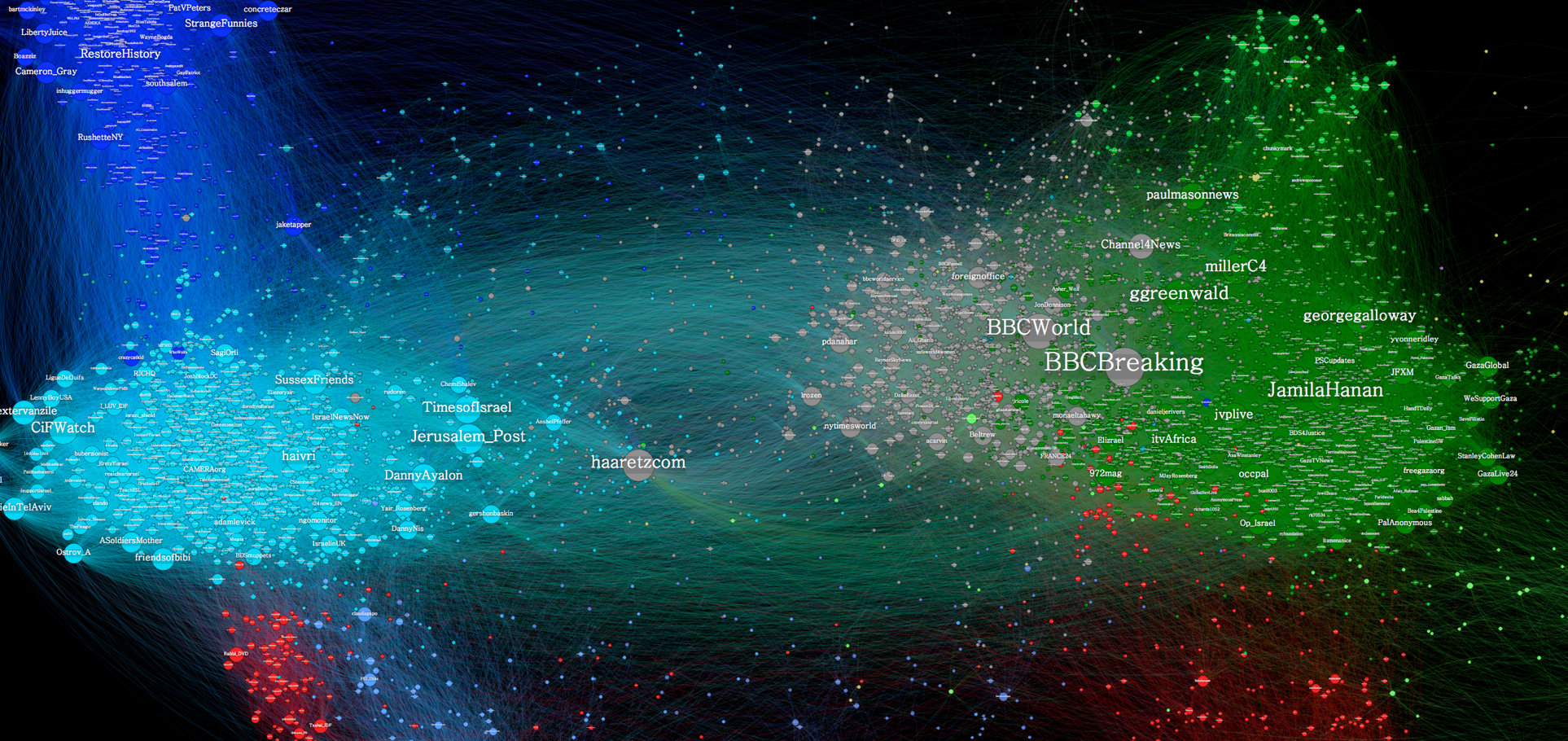Israel, Gaza, and the Internet as a Homogenizing Force
Main source: Israel, Gaza, War & Data by Giliad Lotan
This fascinating article from Medium examines the different ways in which the Israeli-Palestine conflict, which reignited once more this past summer in Gaza, are reported throughout news outlets and social networks. The tumultuous conflict has a long and complicated history, rich with nuance and different perspectives to disentangle. Yet, perhaps surprisingly, the article finds that most of the sources examined tend to fall into either the “Pro-Israel” or a “Pro-Palestine” camp – the former decrying the perpetual launching of rockets into Israeli cities, the latter decrying the humanitarian crisis befalling the civilians living in Gaza. Such an observation wouldn’t be all that novel if it were only talking about journalistic establishments; justified or not, we ascribe a certain slant to the reporting (or, at the very least, of the op-eds) of the Wall Street Journal that may or may not idealistically differ from the slant we ascribe to that of The New York Times.
But the article also examined the sentiment of posts on major social networks like Facebook, Twitter, and Instagram, and the polarization in these multitude of sources, many of whom simply contributed a hashtag or two to some tweets, followed the same structure of “Pro-Israeli”/“Pro-Palestine” in terms of connections (i.e. friendships, followers, etc.) We learned in class that given some pretty reasonable basic assumptions about local behavior – that is, behavior at the triad level – can generally predict the structure of the network at the global level. What is surprising to me is how strongly these assumptions predict the structure of the network for real life data. Below is a figure representing the co-ocurrence of hashtags on Instagram. Note how strongly polarized these two camps are:

From Medium: “This network graph details the landscape of Twitter handles responding to the UNWRA school bombing.” The school bombing referenced was done by the Israeli Air Force, as covered by the NY Times here: http://www.nytimes.com/2014/08/04/world/middleeast/israel-gaza-conflict.html?_r=0
As we saw in class, assuming that all triads in a network are balanced, then the network structure will look something like it does above. What is interesting about this view of network structure is its interpretation that people very strongly are in one camp or the other. Perhaps what this article unearths isn’t very surprising at all. People choose what newspaper they read, so why should they not be able to choose who they follow on Instagram or what they retweet on Facebook? In a sense, I find nothing wrong with this. Yet it doesn’t take much leap of imagination to realize that perhaps all this does is attune our ears only to certain opinions and views, while tuning out those that we have little tolerance for. We at least put a base level of trust in the journalistic integrity of the newspapers that we peruse. That is, no matter your politics, you would be foolish to assert that The New York Times simply doesn’t report anything anti-Democrat (or anti-Republican). Could the same be said of mostly anonymous users on Twitter, who will never be held to the same journalistic or ethical standard? Is it a democratizing force to be unshackled from a select few editorial heralds of our media space, or is it a homogenizing one?
– rjjr
